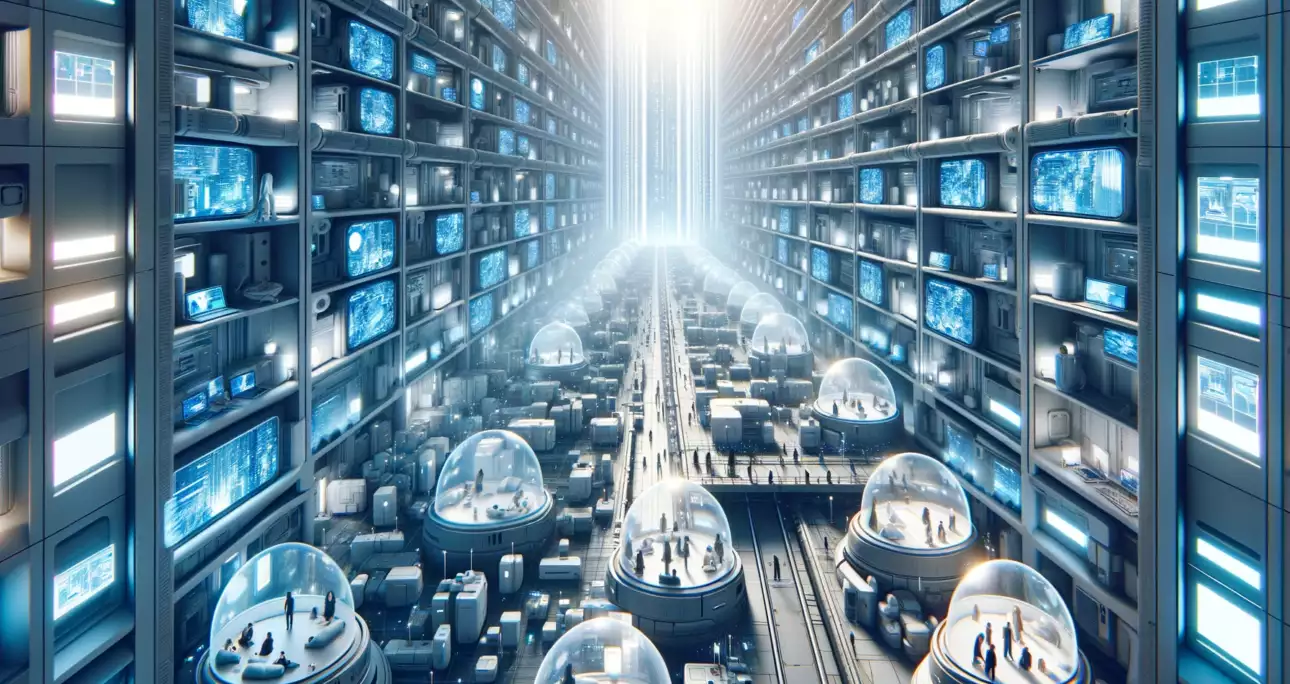E.M. Forster, primarily known for his vivid portrayals of early 20th-century British life, also ventured into the realm of science fiction. His short story “The Machine Stops,” written in 1909, is a remarkable piece that eerily foreshadows the technology-dependent society we find ourselves in today. The Unplug Project explores the parallels between Forster’s fictional world and our current reality, examining the prescience of his vision and its relevance over a century later.
Forster’s Vision in “The Machine Stops”:
In “The Machine Stops,” Forster paints a dystopian future where humanity lives underground, reliant on a vast, omnipotent machine for all its needs. Human contact is rare; most communication happens through instant messaging and video calls. Physical travel is unnecessary and often frowned upon. People live in isolation, in small rooms, where the Machine caters to their every need.

Parallels with Modern Technology:
- Digital Communication Over Physical Interaction: Just as Forster’s characters primarily interact through screens, modern technology has shifted our primary mode of communication to digital platforms. The prevalence of smartphones, social media, and video conferencing, especially accentuated during the COVID-19 pandemic, mirrors the story’s depiction of isolated, screen-based interaction.
- Dependence on Technology for Basic Needs: The Machine in Forster’s story fulfills all physical and intellectual needs, much like today’s Internet and smart home devices. From shopping online to learning through digital platforms, our reliance on technology for everyday tasks aligns closely with Forster’s vision.
- Loss of Physical Skills and Exploration: In Forster’s narrative, the art of walking is almost forgotten, and physical exploration is deemed unnecessary. This echoes current concerns about technology rendering certain physical skills and explorations redundant, as virtual experiences increasingly replace real ones.
- Centralization of Control: The Machine in the story is a centralized system controlling every aspect of life, akin to how major tech companies today hold significant control over our data and the flow of information.
The Warning in Forster’s Tale:
Forster’s story is not just a depiction of technological advancement but also a warning about its potential pitfalls. The over-reliance on technology, loss of personal autonomy, and deterioration of physical and emotional connections are issues that resonate deeply with our current technology-centric lifestyle.
- Emotional Isolation in a Connected World: Despite being more connected than ever, many people experience loneliness and lack of deep, fulfilling relationships, reflecting Forster’s portrayal of isolated lives within the Machine.
- Deterioration of Physical Health: The sedentary lifestyle dictated by excessive technology use has led to concerns about physical health, paralleling the physical deterioration of Forster’s characters.
- Over-Reliance on Technology: The story culminates in the Machine’s collapse, leaving its inhabitants helpless. It serves as a cautionary tale about the dangers of placing too much trust and dependence on technological systems.
“The Machine Stops” is a testament to Forster’s visionary genius. Over a century later, its themes are more relevant than ever, serving as a reminder of the need for balance in our technologically driven lives. While we embrace the conveniences and opportunities that modern technology brings, Forster’s story urges us to remember the value of physical experience, emotional connections, and independence from the machines we create.





